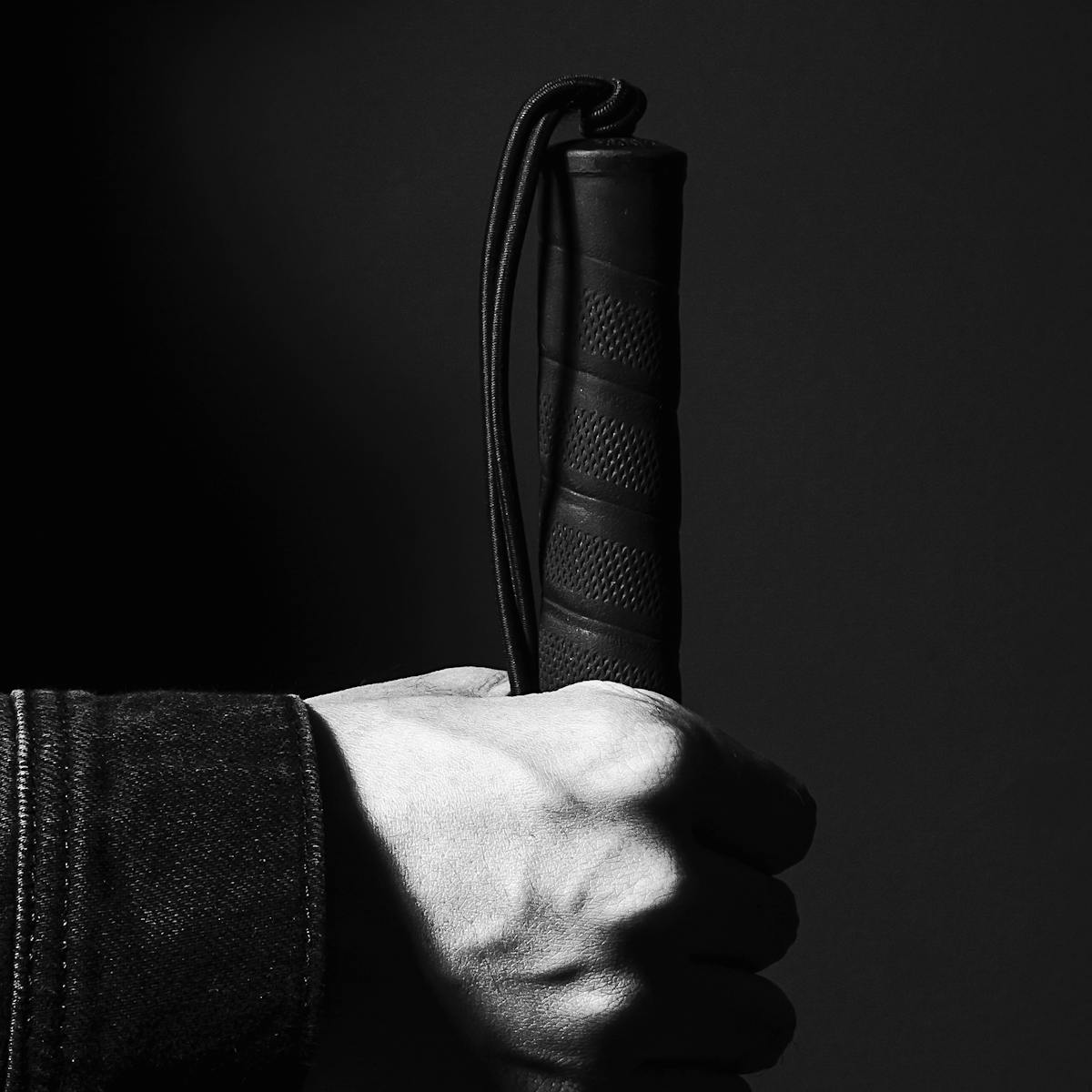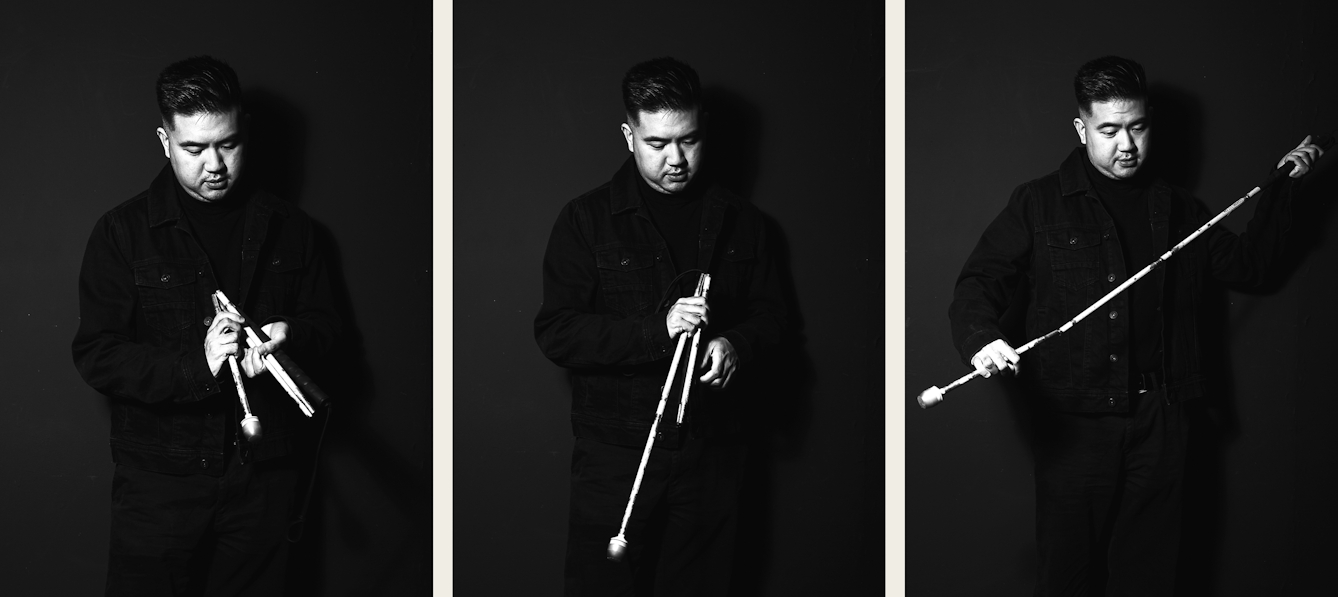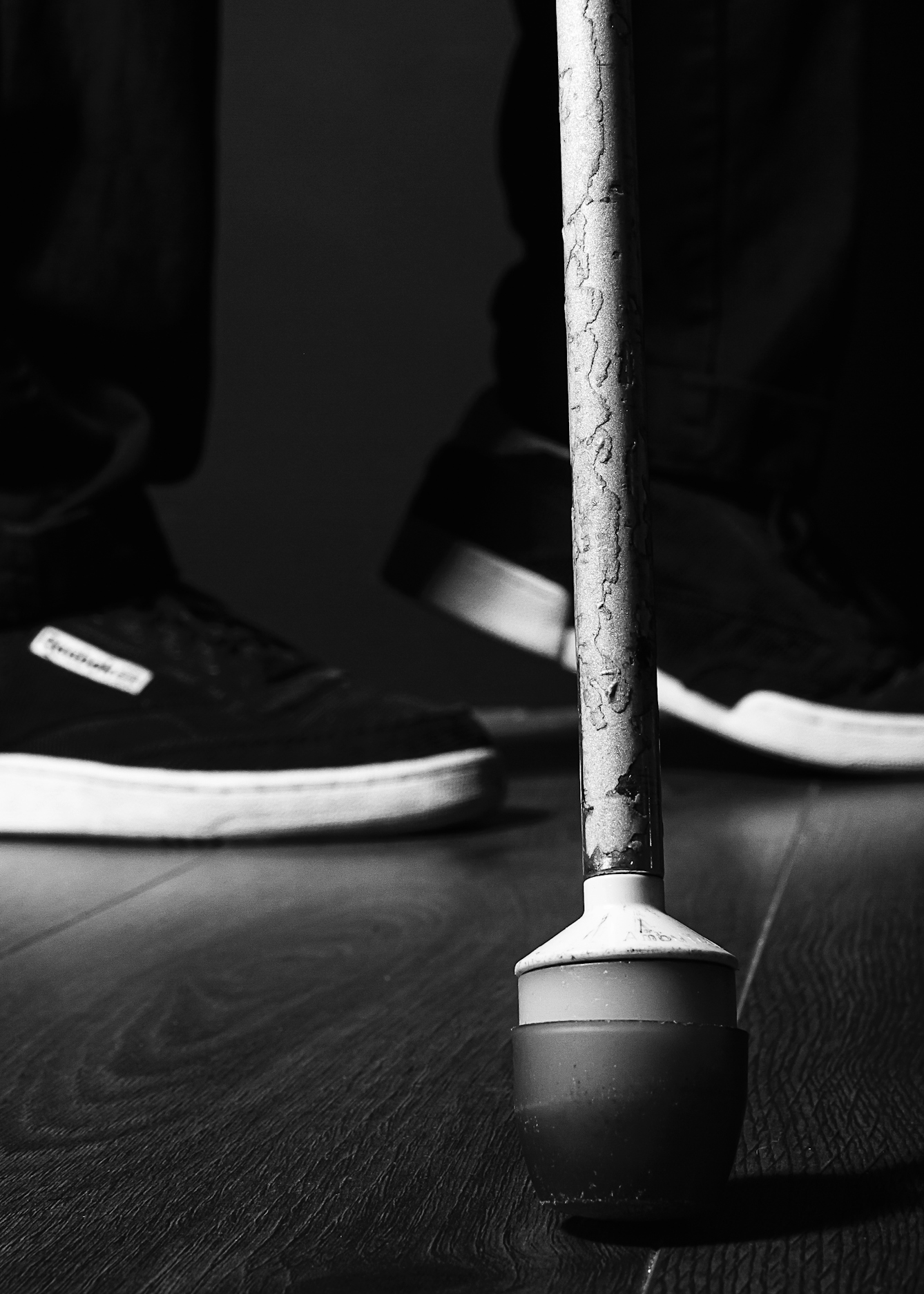The white cane has been an invaluable aid to visually impaired people for nearly a century. Here Alex Lee explores whether recent technological additions to the basic design are an improvement on the original or not.
The unimprovable white cane
Words by Alex Leephotography by Ian Treherneaverage reading time 7 minutes
- Serial

I’ve always had a troubled relationship with the white cane. The long, foldable metal stick is a tool of independence for many visually impaired people. It’s a lifeline that offers them the confidence to leave their house and venture out on their own.
But when I sat at home, slowly being introduced to a variety of unwieldy folding contraptions by the council’s sight-loss rehabilitation officer, all I could feel was a deep sense of shame. I remember thinking that I’d never use the stick as I held the rubberised handle of the roller-tip cane in my left hand. For two years I didn’t, instead opting to use the smaller, more discreet 20-centimetre-long symbol cane that identified me as blind or visually impaired.
Even when I bared my teeth and agreed to hold the symbol cane in my left hand, more often than not you’d find it folded up and tucked away in the sleeve of my shirt for maximum discretion. The complete opposite of its intended purpose.
The invention of the white cane has been attributed to a number of different people over the years, but the most widely accepted originator is the Bristol-based photographer James Biggs, who in 1921 decided to paint his walking stick white following an accident that caused him to lose his sight. Fearing he might get mowed down by the increasingly numerous motor vehicles speeding outside his home, painting his dark-coloured walking stick white made him feel safer.
It wasn’t until 1930 that the fully sighted 42-year-old Parisian Guilly d'Herbemont noticed, like Biggs, how perilous visually impaired people found it crossing the roads. Motor vehicles at the time didn’t have headlights, so traffic was regulated by policemen with white sticks. D'Herbemont realised that if visually impaired people held white canes of their own, motorists would stop to avoid them.

“I’ve always had a troubled relationship with the white cane. The long, foldable metal stick is a tool of independence for many visually impaired people.”
Later that year, d'Herbemont wrote to the director of Paris’s national newspaper L'Écho de Paris, calling on the white cane to be officially recognised as a symbol of visual impairment. The campaign was picked up by newspapers in the UK, and by 1931 recognition of the white cane was beginning across Europe.
Even then, some blind people opposed the use of the white cane, with many not wanting to be recognised as blind. The stigma, shame and discomfort felt by people with late-onset visual impairment has been recorded several times throughout the years, most recently in a 2015 study by Marion Hersh at the University of Glasgow. But being marked out as ‘different’ was one of the reasons that other visually impaired people supported the white cane as an official symbol.
Towards the end of World War II, Richard Hoover, an army sergeant and a former teacher at a school for the blind in Baltimore in the United States, was assigned to a centre for the treatment of blinded soldiers in the Valley Forge Army Hospital. There he spent a week walking around blindfolded with a white cane, swinging it back and forth in front of his feet to avoid obstacles. This technique, known as the Hoover method, is now taught to visually impaired people all over the world to help them travel independently.
When engineering meets economic reality
Since then, scientists and researchers have tried to re-engineer the cane, attempting to make it better with the use of technology like ultrasonic alerts, vibrations and GPS. But in some ways the humble white cane has proved to be unimprovable.
Shortly after graduating from Durham University in the 1940s, former World War II aircraft engineer Leslie Kay took on a new job as a civilian scientist with the Admiralty in Portland. There he developed underwater sonar technology to identify submarines and mines. For ten years, Kay worked as for both the Admiralty and MI6, identifying and tracking Soviet and French submarines. But when Kay noticed a Soviet vessel transmitting his exact signal back at him, he knew that his technology had been stolen.

“When I sat at home, slowly being introduced to a variety of unwieldy folding contraptions... all I could feel was a deep sense of shame.”
He swiftly left the Admiralty to become an academic at the University of Birmingham, where his research paved the way for something that he hoped would change blind people’s lives for ever.
In some ways the humble white cane has proved to be unimprovable.
In the early 1960s he was watching blind children learning how to swim and how they hit their heads on the wall as they did so. He began to think about how sonar technology might help people with impaired vision navigate on land. Curious about how bats navigated in the air without sight, Kay and his daughter captured horseshoe bats in bell towers and old schools with mist nets.
Kay studied the bats’ travel and sound patterns. The research led to the world’s first electronic aid for blind and visually impaired people: the Sonic Torch – a handheld ultrasonic flashlight-like device that used echolocation to detect obstacles in the holder’s path, emitting a near-constant sound that they could follow.
The Sonic Torch was followed by the Sonic Guide, a pair of glasses with ultrasonic sensors mounted on them. But both the Sonic Torch and Sonic Guide were commercial failures. Other tech-enabled mobility aids throughout the 20th century included the Mowat Sensor, the LaserCane, the Sonic PathFinder and the Polaron. None of them are around today.

“Ultimately, it might just be the simple white cane that visually impaired people will always prefer.”
Waves of innovation
For more than 20 years, engineering professor Brian Hoyle from the University of Leeds and his colleagues have been trying to make their ultrasonic-wave-enabled UltraCane a success. In the late 1990s Hoyle set up a research interest group to find new uses for ultrasonic technology. There he met biologist Dean Waters, who specialised in bat echolocation, and neuroscientist Deborah Withington, who researched human sensory systems.
They noted that there hadn’t been much innovation in the realm of canes. Realising that auditory feedback would be distracting for a visually impaired person, they spent two years developing a cane with two vertical sensors that would vibrate to indicate an obstacle above or in front of the holder. For a year, the team worked with 100 visually impaired volunteers to test the product.
By 2003, it was already winning innovation awards around the world. But four years later, struggling with investment, the company was forced to shut down. “We were just about reaching the stage where the costs of running the show were equal to the profit from the sales coming in. We needed to sell about 50 a month to do that,” remembers Hoyle, who adds that the company was selling about 20 to 40 units a month.
With backing from a new investor, Hoyle was able to relaunch the UltraCane with new improvements, like the autotuning of the transducers in the device. It’s still being sold around the world today. And others continue to try to find ways of improving the cane: the SmartCane from India, the WeWALK smart cane from Turkey and a ‘talking’ walking stick from Russia.
Ultimately, it might just be the simple white cane that visually impaired people will always prefer. “Engineers often create something which has every possible bell and whistle that the current technology can provide but don't consider what the visually impaired user will be able to do with the information,” says David Clark-Carter, Emeritus Professor of Psychology at the University of Staffordshire, who has been researching how visually impaired people get around for more than 15 years.
Many of these technologies have been developed by good-hearted sighted individuals keen on trying to make the world an easier place for visually impaired people. The problem is that you won’t know what visually impaired people want from a new tool unless they’re involved in creating it.
About the contributors
Alex Lee
Alex is a tech and culture journalist. He is currently tinkering with gadgets and writing about them for the Independent. You may have previously seen his work in the Guardian, Wired and Logic magazine. When he’s not complaining about his struggles with accessibility, you’ll likely find him in a cinema somewhere, attempting to watch the latest science-fiction film.
Ian Treherne
Ian Treherne was born deaf. His degenerative eye condition, which by default naturally cropped the world around him, gave him a unique eye for capturing moments in time. Using photography as a tool, a form of compensation for his lack of sight, Ian is able to utilise the lens of the camera, rather than his own, to sensitively capture the beauty and distortion of the world around him, which he is unable to see. Ian Treherne is an ambassador for the charity Sense, has worked on large projects about the Paralympics with Channel 4 and has been mentored by photographer Rankin.

